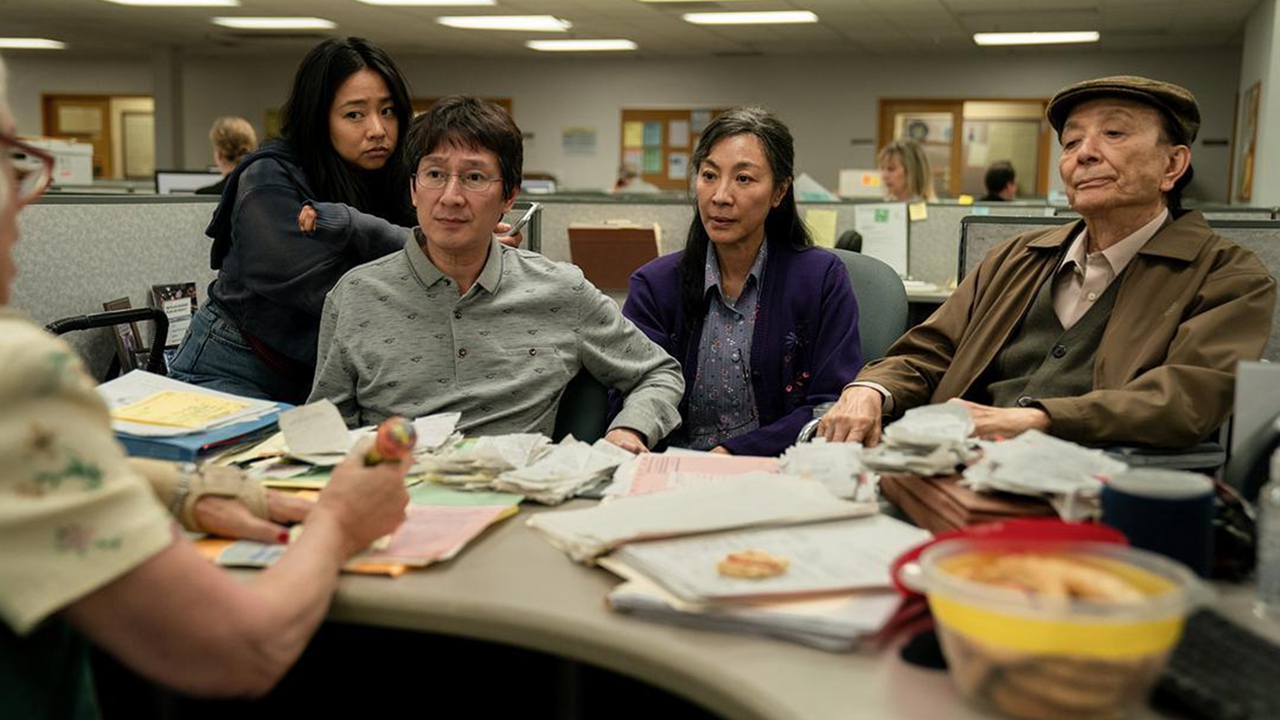Oscar winner embraces multiculturalism
The 95th Academy Awards saw Michelle Yeoh, a Malaysian of Chinese origin, becoming the first Asian woman to win the Best Actress award for her role in “Everything Everywhere All at Once.” The film won six more awards, including Best Picture, Best Director, Best Supporting Actress and Best Supporting Actor, making it a phenomenon at this year’s Oscars.
The film uses the mother-daughter relationship in an Asian-American family to weave a sci-fi multiverse tale of a woman trying to save her family’s failing laundromat, struggling with a disintegrating marriage and dealing with her always disapproving father. But it’s the widening gulf between the mother (Evelyn, played by Yeoh) and her daughter that threatens to unravel the fabric of existence as she learns that she is just one Evelyn in a vast multiverse of Evelyns, and the only one who can save it.

Most of the main characters in “Everything Everywhere All at Once” are of Asian origin. SD-Agencies
The movie uses sci-fi elements to address a range of issues, including ethnic cultural identity, clash between classes, and the acceptance of the LGBTQ community in the U.S. society. This explains why a politically correct award like the Oscars would honor a movie deemed a deviation from mainstream aesthetics.
The film with typical postmodern features has been controversial from the outset due to its too flashy collages, “copying of old tropes,” and being heavily packed with scientific and philosophical concepts.
The film was criticized even before it won any award for exploiting the traditional Chinese culture. Some cultural symbols, such as the Hong Kong and Chinatown elements and Asian actors in the film, obviously point to China, but that does not mean Hollywood is carrying out an in-depth study of Chinese culture.
The problem with Hollywood, or the Academy Awards for that matter, is that only movies that don’t have too many “provocative” attributes can win many awards.
The real reason why such a commercial film has received so many honors at the Oscars is not simply about the United States seeking reconciliation with the Asian-American community.
The deep-seated differences and conflicts in the U.S. society are symbolically addressed through multiverse in the film, which offers a final solution in the form of love and reconciliation between Evelyn and her daughter.
Therefore, this seemingly radical, avant-garde film speaks of the typical U.S. cultural trope that puts family and love between its members at the center of its values, which is consistent with Hollywood’s standards.
Unlike the three major film festivals in Europe, the Academy of Motion Picture Arts and Sciences does not consider art to be the highest criterion in evaluating a film. It has always had a realistic view of creative works and valued social representation in movies.
Looking back at the Oscar winners since 2010, we can see its criteria for picking the winners have become increasingly conservative.
Although the Oscar officials repeatedly claimed that all winning works must be sufficiently representative and inclusive, even animation films based on Marvel adaptations are not as attractive as they used to be because of the binding conservative values. They used to make a killing at the box office around the world, including in China.
That said, “Everything Everywhere All at Once” represented a watershed moment in the history of the Oscars, as it shows a willingness of the Hollywood to embrace different cultures and new and bold artistic expressions. This is a positive cultural signal from the increasingly conservative and unilateralist U.S., which serves the overall goal of “America first” at the expense of disrupting the global supply and industry chains.